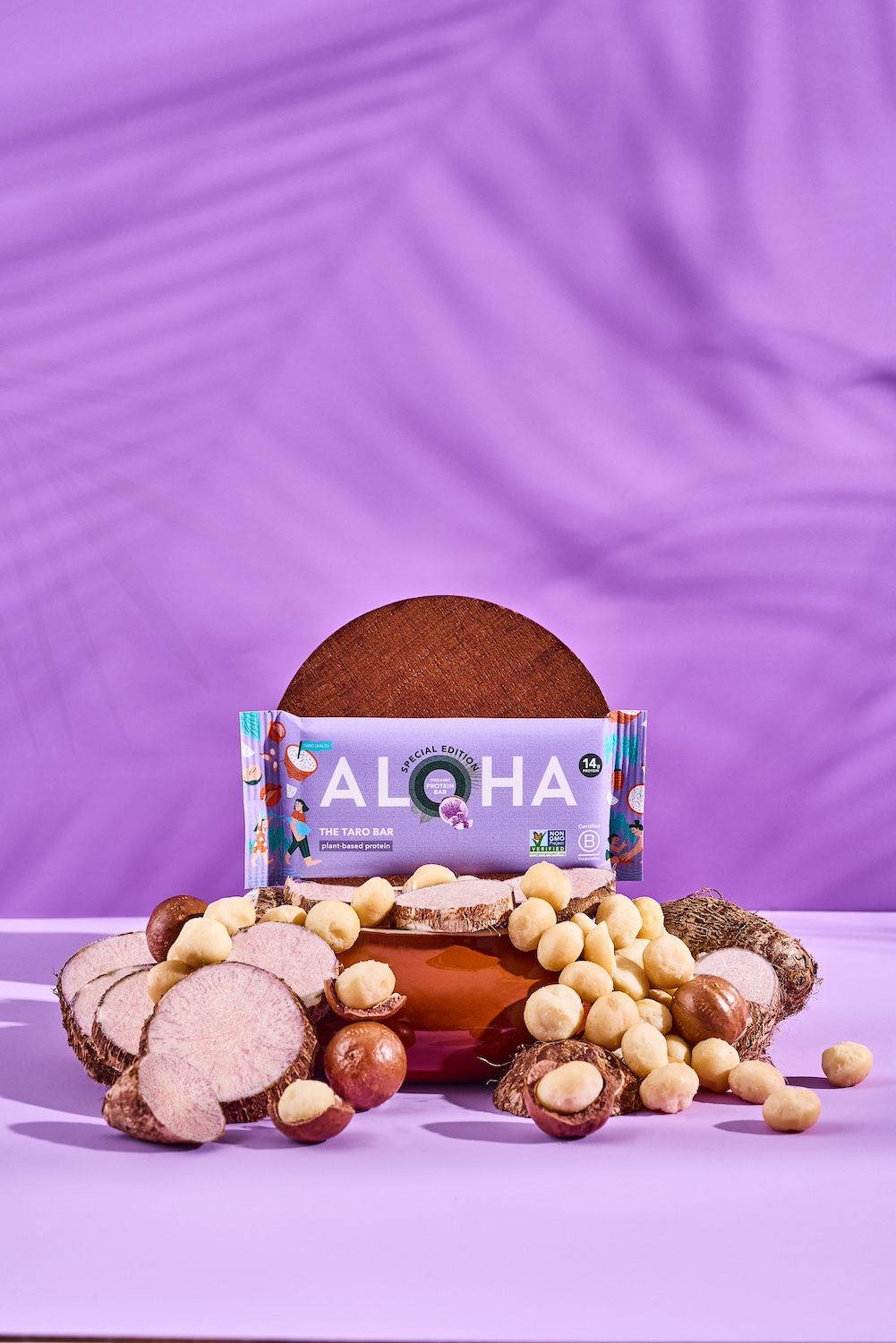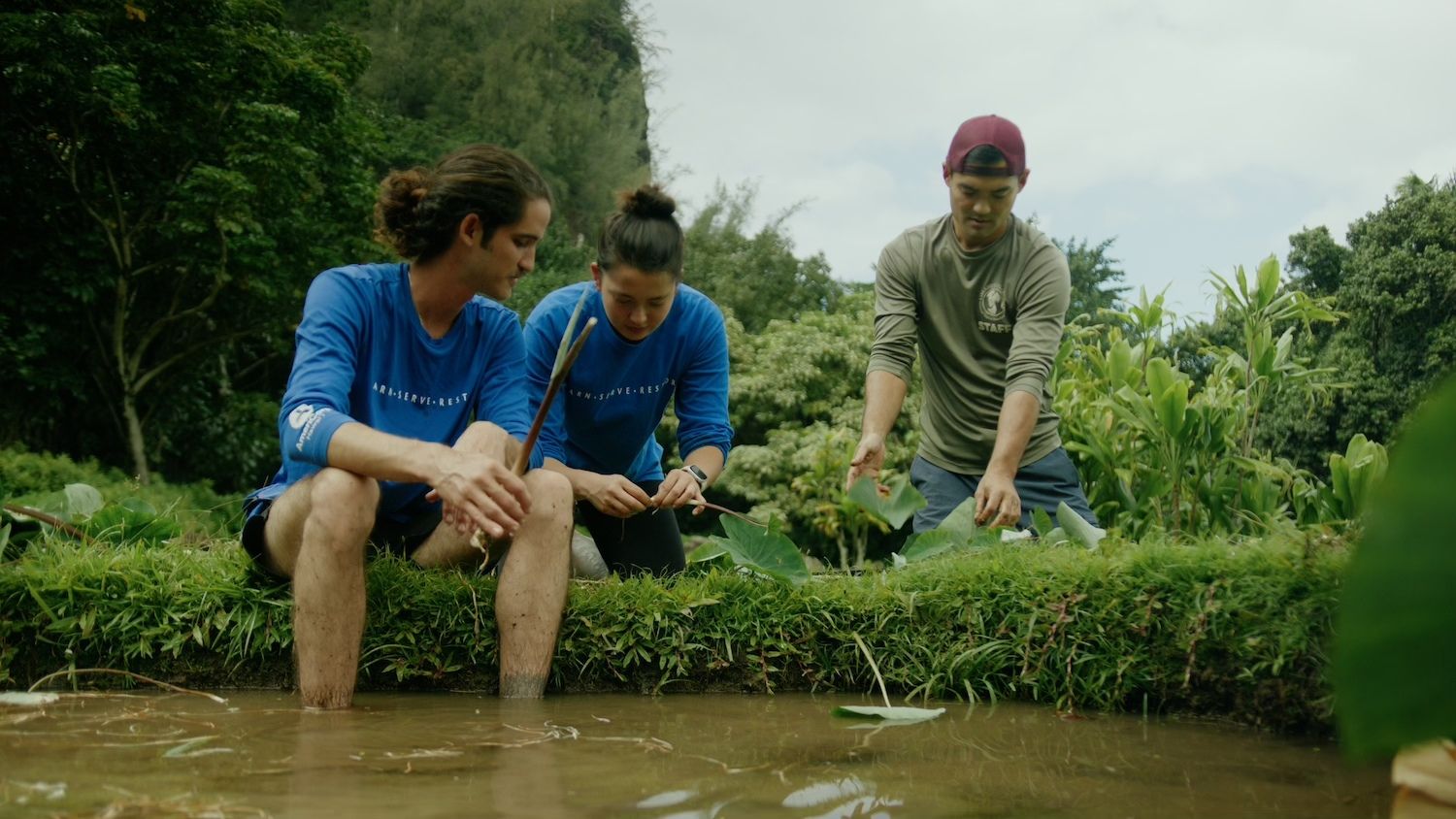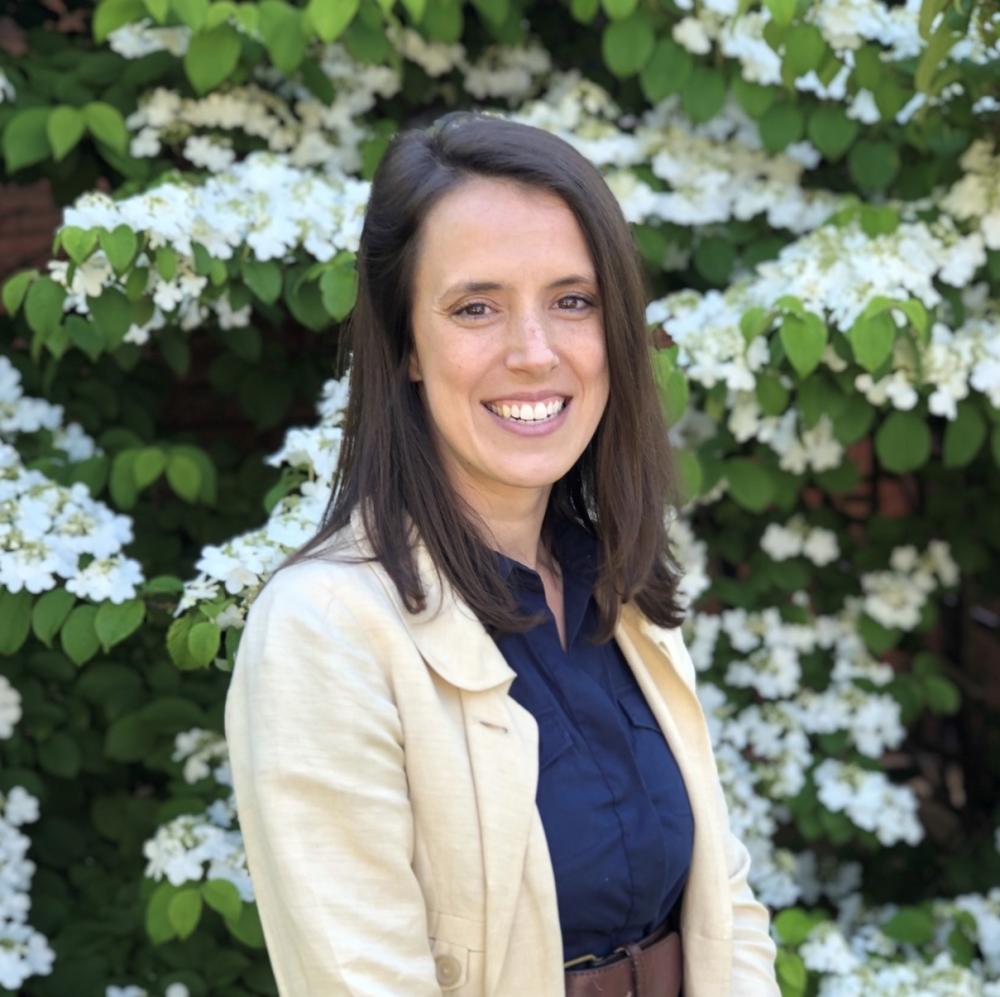
A local farmer holds up the Lehua variety of taro grown in the Hanalei Valley of Hawai'i, the feature ingredient of Aloha's new protein bar. (Image courtesy of Aloha.)
Taro, a starchy root vegetable known as “kalo” in Hawaiian, is more than just a staple food in Hawaiian diets. It’s a symbol of cultural identity, family and connection to the land. A new protein bar from Aloha, the plant-based nutrition brand, is bringing this sacred crop into the national spotlight while giving back to the communities that cultivate it.
The brand recently launched its third special edition Hawai‘i protein bar: the taro bar, made with the Lehua variety of taro locally grown on family farms in Hanalei Valley, Kaua‘i. The line is a part of an effort to connect consumers with sustainable agriculture in Hawai'i and support local farms and communities.

“In our creation story, kalo is literally our older sibling,” said Keisha Tanaka, a former taro farmer and now external affairs officer at the Hawai‘i-based nonprofit Kupu. “The first kalo plant came from the stillborn child of the sky father, Wākea, and earth mother, Hoʻokūkalan. Every part of the kalo plant represents us. That’s why we call the kalo offshoots ‘oha.’ It’s where the word ‘ohana,’ or family, comes from.”
Taro has been cultivated in Hawai‘i for centuries using “lo‘i,” wetland terrace systems that channel a constant flow of freshwater from mountain streams to maintain soil health and promote biodiversity. The root vegetable matures in the rich volcanic soil over the course of a year.
The bar also features a plant-based oil derived from pongamia trees grown on O‘ahu’s North Shore in a forestry management program that sequesters carbon, restores soil health, and requires little water or fertilizer.

Ten percent of proceeds from every taro bar are donated to Kupu, a Hawai‘i-based nonprofit focused on empowering youth through service and education in conservation, sustainability and natural resource management. Those donations are investments in programs that provide service opportunities and entry points to careers for young people in natural resource management, sustainable agriculture and climate resilience. Youth who participate in Kupu programs might visit farms to help plant crops or design and implement conservation and sustainability solutions for their schools and communities.
For Tanaka, who joined Kupu and returned to Hawai’i after leaving a career in musical theater in New York, the program was life-changing.
“I didn’t have any experience in conservation, but Kupu gave me the opportunity to come home and do something meaningful,” she said. “I learned how to grow food. I am learning how to speak Hawaiian, and how to steward the land. My friends from that cohort are now site managers, policy advocates and farm leaders.”

Tanaka recalled how farming taro reconnected her with her culture, language and the rhythms of the land. “There’s a name for every kind of wind, every kind of rain, every peak of a mountain that catches the water,” she said. “Those names inform us in how we grow food. When you know the name of the rain, you know what that rain will do to your crops. It’s our āina, or the land around us. It means ‘that which feeds,’ and it’s reciprocal. You feed the land, and the land feeds you.”
Though Tanaka no longer farms with Kupu, she still maintains a home garden and remains on staff at the nonprofit, using her experience to help others reconnect with their roots. “We are making this work normal again,” she said. “It’s not just a once-a-year farm visit. It’s an ongoing relationship with the land.”
Maeghan Castillo, donor services manager at Kupu, emphasized the larger significance of local agriculture in Hawai‘i. “Local food in Hawai‘i is different than in other places,” she said. “It’s an expression of who we are. There are hundreds of varieties of kalo, just like there are hundreds of kinds of people. When we bring local produce into schools and restaurants, it reflects the health of our community. We are feeding ourselves and supporting each other.”
Despite growing awareness, challenges remain for local small farmers. Land development and climate change put many of these traditional agricultural systems and the farmers who maintain them at risk. And access to land, infrastructure, and markets continues to hinder many from scaling their operations or earning a sustainable living.
“People come to Hawai‘i and eat food flown in from California or Mexico,” Castillo said. “But we have everything we need right here to tell our own story through food.”
She is working on connecting farmers with better distribution networks to help consumers buy directly from local producers. “There’s so much beauty in our agriculture, and we’re so lucky to have it,” Castillo said. “Now we need to make sure the people growing it have the tools and support they need.”
Tanaka echoed the importance of systemic change. “We grew up eating microwave meals and fast food,” she said. “But my great-grandmother lived to be 102, eating ancestral foods. We’re seeing people start to return to that. This isn’t just about farming. It’s about coming home to who we are.”

Mary Riddle is the director of sustainability consulting services for Obata. As a former farmer and farm educator, she is passionate about regenerative agriculture and sustainable food systems. She is currently based in Florence, Italy.














